Gigel Macesanu
OctoPath: An OcTree Based Self-Supervised Learning Approach to Local Trajectory Planning for Mobile Robots
Jun 02, 2021
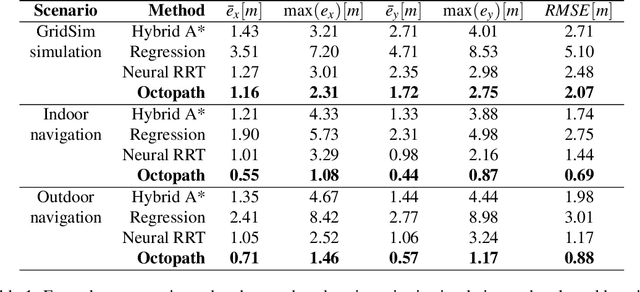
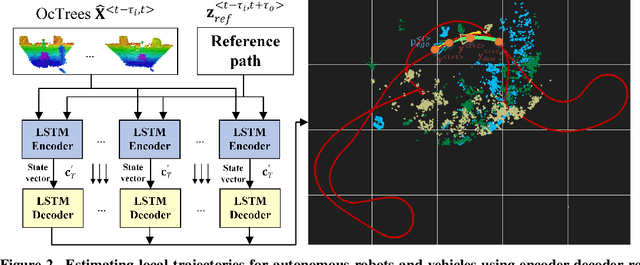

Abstract:Autonomous mobile robots are usually faced with challenging situations when driving in complex environments. Namely, they have to recognize the static and dynamic obstacles, plan the driving path and execute their motion. For addressing the issue of perception and path planning, in this paper, we introduce OctoPath , which is an encoder-decoder deep neural network, trained in a self-supervised manner to predict the local optimal trajectory for the ego-vehicle. Using the discretization provided by a 3D octree environment model, our approach reformulates trajectory prediction as a classification problem with a configurable resolution. During training, OctoPath minimizes the error between the predicted and the manually driven trajectories in a given training dataset. This allows us to avoid the pitfall of regression-based trajectory estimation, in which there is an infinite state space for the output trajectory points. Environment sensing is performed using a 40-channel mechanical LiDAR sensor, fused with an inertial measurement unit and wheels odometry for state estimation. The experiments are performed both in simulation and real-life, using our own developed GridSim simulator and RovisLab's Autonomous Mobile Test Unit platform. We evaluate the predictions of OctoPath in different driving scenarios, both indoor and outdoor, while benchmarking our system against a baseline hybrid A-Star algorithm and a regression-based supervised learning method, as well as against a CNN learning-based optimal path planning method.
LVD-NMPC: A Learning-based Vision Dynamics Approach to Nonlinear Model Predictive Control for Autonomous Vehicles
May 27, 2021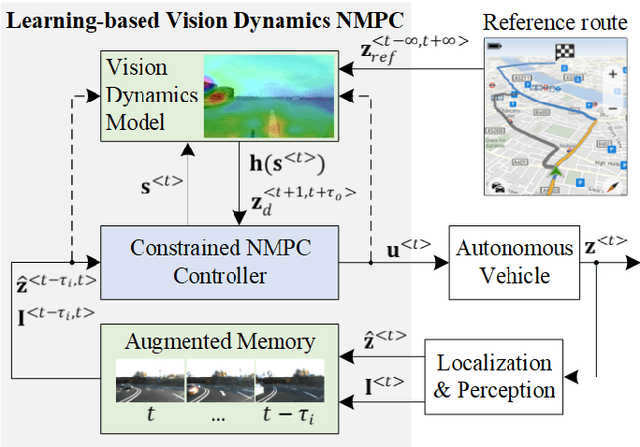
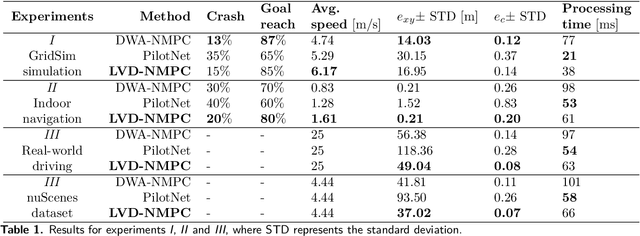
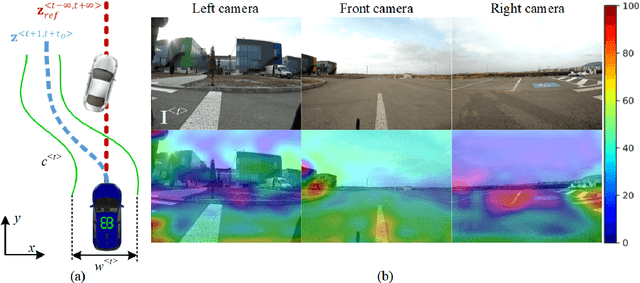

Abstract:In this paper, we introduce a learning-based vision dynamics approach to nonlinear model predictive control for autonomous vehicles, coined LVD-NMPC. LVD-NMPC uses an a-priori process model and a learned vision dynamics model used to calculate the dynamics of the driving scene, the controlled system's desired state trajectory and the weighting gains of the quadratic cost function optimized by a constrained predictive controller. The vision system is defined as a deep neural network designed to estimate the dynamics of the images scene. The input is based on historic sequences of sensory observations and vehicle states, integrated by an Augmented Memory component. Deep Q-Learning is used to train the deep network, which once trained can be used to also calculate the desired trajectory of the vehicle. We evaluate LVD-NMPC against a baseline Dynamic Window Approach (DWA) path planning executed using standard NMPC, as well as against the PilotNet neural network. Performance is measured in our simulation environment GridSim, on a real-world 1:8 scaled model car, as well as on a real size autonomous test vehicle and the nuScenes computer vision dataset.
A Survey of Deep Learning Techniques for Autonomous Driving
Oct 17, 2019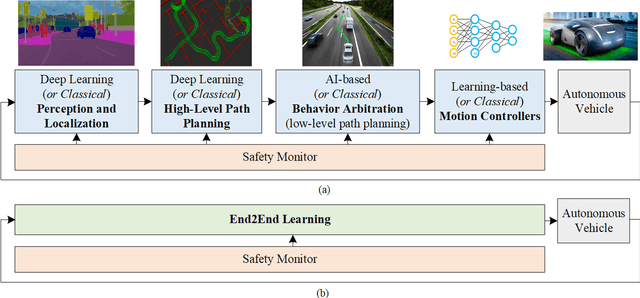
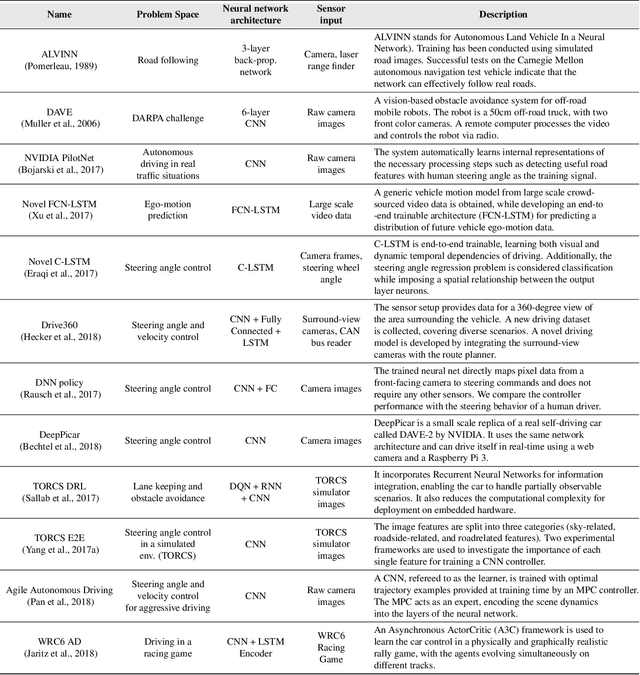

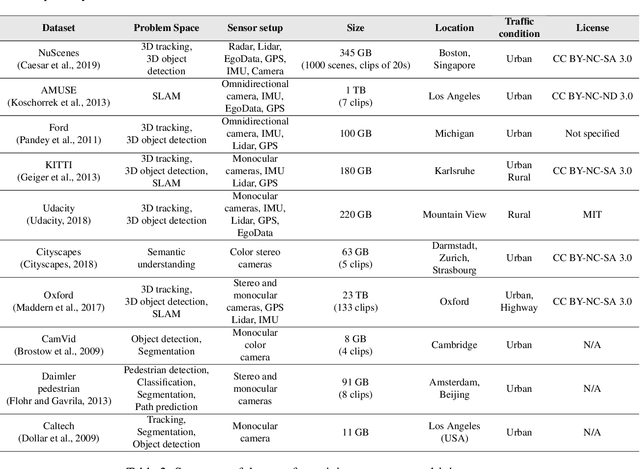
Abstract:The last decade witnessed increasingly rapid progress in self-driving vehicle technology, mainly backed up by advances in the area of deep learning and artificial intelligence. The objective of this paper is to survey the current state-of-the-art on deep learning technologies used in autonomous driving. We start by presenting AI-based self-driving architectures, convolutional and recurrent neural networks, as well as the deep reinforcement learning paradigm. These methodologies form a base for the surveyed driving scene perception, path planning, behavior arbitration and motion control algorithms. We investigate both the modular perception-planning-action pipeline, where each module is built using deep learning methods, as well as End2End systems, which directly map sensory information to steering commands. Additionally, we tackle current challenges encountered in designing AI architectures for autonomous driving, such as their safety, training data sources and computational hardware. The comparison presented in this survey helps to gain insight into the strengths and limitations of deep learning and AI approaches for autonomous driving and assist with design choices
* 38 pages, 7 figures
 Add to Chrome
Add to Chrome Add to Firefox
Add to Firefox Add to Edge
Add to Edge